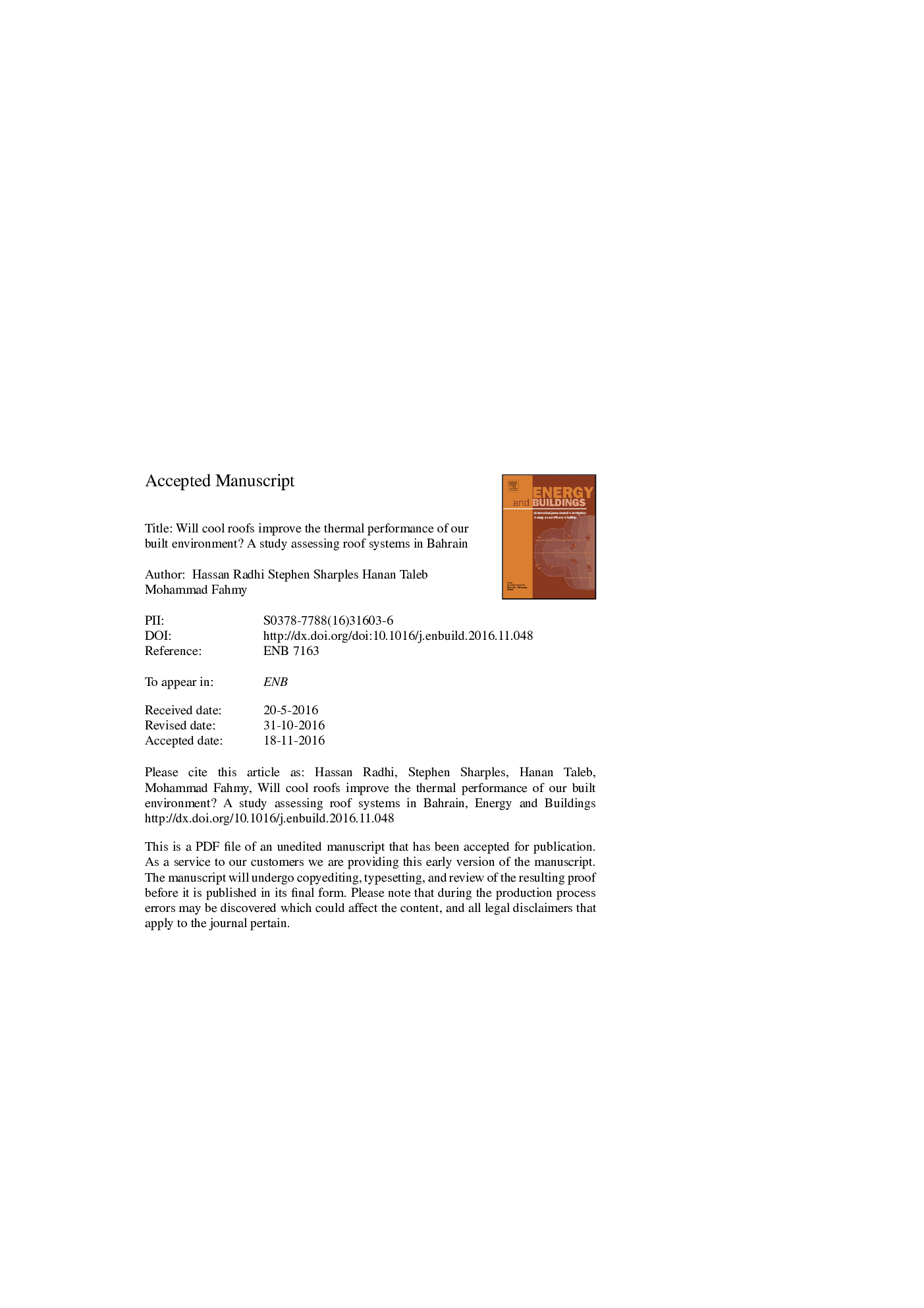| کد مقاله | کد نشریه | سال انتشار | مقاله انگلیسی | نسخه تمام متن |
|---|---|---|---|---|
| 4919401 | 1428955 | 2017 | 38 صفحه PDF | دانلود رایگان |
عنوان انگلیسی مقاله ISI
Will cool roofs improve the thermal performance of our built environment? A study assessing roof systems in Bahrain
ترجمه فارسی عنوان
سقف های خنک، عملکرد حرارتی محیط ساخته شده ما را بهبود می بخشد؟ یک مطالعه برای بررسی سیستم های سقف در بحرین
دانلود مقاله + سفارش ترجمه
دانلود مقاله ISI انگلیسی
رایگان برای ایرانیان
کلمات کلیدی
سقف سرد، جزیره گرمایی شهری، عملکرد حرارتی، بحرین،
موضوعات مرتبط
مهندسی و علوم پایه
مهندسی انرژی
انرژی های تجدید پذیر، توسعه پایدار و محیط زیست
چکیده انگلیسی
A number of international campaigns have recently proposed the use of cool roofs worldwide in order to cope with the summer urban heat island (UHI) effect. This work investigates cool roof strategy and examines the potential of such a strategy for Bahrain. Full-scale measurement, meteorological modelling and thermal simulation of five standard roofs were performed during particular summer days due to the high intensity levels of solar irradiation. This work shows that the light tile roof and metal decking are relatively cooler and more comfortable than others and that the maximum reduction in heat gain occurs for a light tile roof with thermal insulation materials. Nevertheless, without insulation the cooling load is increased by only 1.3%. This percentage seems not to be cost-effective where economics and building construction are concerned. In contrast, the reduction percentage due to the use of thermal insulation in the case of dark tile roof, felt bitumen roof and screed roof increases to 5-7%, which is more cost effective. This work concludes that the cool roof strategy is the most cost-effective for the hot climate of Bahrain, which has a long cooling season. With the current levels of urban development in Bahrain, cool roofs can reduce UHI intensity and building cooling loads, lowering demand for electricity and greenhouse gas emissions from power plants. To avoid any negative consequences from using this strategy, however, trade-offs between urban mitigation and adoptation strategies and complementary technologies should be accounted for in future urban development plans.
ناشر
Database: Elsevier - ScienceDirect (ساینس دایرکت)
Journal: Energy and Buildings - Volume 135, 15 January 2017, Pages 324-337
Journal: Energy and Buildings - Volume 135, 15 January 2017, Pages 324-337
نویسندگان
Hassan Radhi, Stephen Sharples, Hanan Taleb, Mohammad Fahmy,
